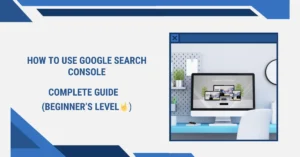Do you want to build a contact form and integrate it with your WordPress website?
A contact form should be on every website so that customers may quickly get in touch with you regarding your goods and services. WordPress does not by default include a built-in contact form, but you can easily add one to your website.
Without writing a single line of code, we’ll walk you through the simple process of creating a contact form in WordPress in this article.
Table of Contents
Why Do You Need a WordPress Contact Form?
You may be asking yourself, “Why do I need a contact form?” Can’t I just include my email address on my website so that visitors can contact me there?
That’s a frequently asked concern by novices who are worried that coding expertise is needed to install a contact form.
Fortunately, if you don’t know how to code, you can easily add a contact form to your WordPress website using a plugin.
These are the main three reasons using a contact form is preferable to just pasting your email address on a webpage.
Spam Protection –
Spam bots regularly scrape websites for the mailto: email address tag. When you post your email address on the website, you will start to receive a lot of spam emails. On the other hand, your contact form can block contact form spam and stop almost all spam emails.
Consistent Information –
When emailing, people don’t always send you all the information that you need. With a contact form, you can tell the user exactly what information you’re looking for, like their phone number, budget, project details, and more.
Saves Time –
Contact forms help you save time in more ways than you can imagine. Aside from consistent information, you can also use form confirmations to tell the user the next steps they should take. Like, watch a video or wait up to 24 hours to get a response, so they don’t send you multiple inquires.
With that said, let’s show you how to easily create a contact form in WordPress, step by step.
Step 1. Choosing the Best WordPress Contact Form Plugin
Selecting a WordPress contact form plugin is the first task that has to be completed.
Although there are a number of premium and free WordPress contact form plugins available, we use WPForms on our site since we think it’s the finest solution available.
The three reasons we believe WPForms to be the greatest are as follows:
- It is the most beginner friendly contact form plugin available. You can use the drag & drop builder to easily create a contact form in just a few clicks.
- WPForms Lite is 100% free, and you can use it to create a simple contact form (over 6 million sites use it).
- When you are ready for more powerful features, then you can upgrade to WPForms Pro.
To learn more, see our detailed WPForms review.
Now that we have decided on the contact form plugin, let’s go ahead and install it on your site.
Step 2. Install a Contact Form Plugin in WordPress
We’ll use WPForms Lite for this lesson since it’s user-friendly and cost-free.
By heading to Plugins » Add New in your WordPress dashboard after logging in, you may install this plugin on your website.
Next, type “WPForms” into the search bar and select “Install Now.”
This will automatically install the plugin on your site.
Next, you need to activate the plugin by clicking the ‘Activate’ button.
If you don’t see the plugins menu or want more detailed instructions, then see our step by step guide on how to install a WordPress plugin.
Step 3. Create a Contact Form in WordPress
You are now prepared to construct a contact form in WordPress after activating WPForms.
Go to WPForms » All Forms in your WordPress admin panel to accomplish this. Next, select “Add New” from the menu.
The WPForms drag and drop form builder template library will open as a result. You should first choose your contact form template after giving your form a name.
Hover your cursor over a template and select it by clicking the “Use Template” button.
There are more than 20 free form templates available with WPForms Lite. These allow you to design nearly any kind of contact form you choose.
We’ll choose the “Simple Contact Form” template for the purposes of this demonstration. The fields for Name, Email, and Message will be added automatically.
To edit any of the form fields, simply click on it.
A “Field Options” window with editable fields appears on the left when you click on a form field.
You can also use your mouse to drag and drop the fields to change the order.
If you want to add a new field, then simply select from the available fields on the left sidebar.
You can drag it over to your form or click on it, and it will automatically be added to your form.
When you’re done customizing your form, make sure to click on the ‘Save’ button.
Step 4. Configuring WordPress Form Notification and Confirmations
It’s crucial that you correctly specify the form confirmation and notification options after creating your contact form.
The page that your website visitor sees after submitting the form is the form confirmation. This might be a straightforward “thank you” message, a website with downloadable PDF files, or anything else you’d like.
The email you receive upon submission of a contact form on your WordPress blog is known as a form notification.
In the form builder, select the “Settings” tab and then the “Confirmations” tab to personalise the confirmation message.
A thank-you note by default is already present.
But if you’d like, you can alter this in the “Confirmation Message” box.
Instead of displaying a message to users upon successful form submission, choose “Go to URL” from the “Confirmation Type” drop down menu.
Next, type in the URL that you want users to be redirected to.
Make sure to click “Save” after making any changes here.
You can then confirm that the form notification settings are accurate. To get started, just select the ‘Notifications’ tab from the same ‘Settings’ menu.
The default settings of WPForms are perfect for novices, which is its best feature. Upon accessing the notification settings, all fields will have dynamic pre-fill values.
By default, the admin email address you specified when you created your site receives the notifications.
You can alter that to send it to a different email address if you’d like. To send the message to several email addresses, simply comma-separate each email address.
The name of your form appears in the “Email Subject Line” field already. The name of your user is automatically entered into the “From Name” field.
The email address that your user provided on the contact form will be used when you respond to the form inquiry.
Whenever you make changes here, be sure to click the “Save” button.
See our tutorial on creating a contact form with multiple recipients if you wish to send your form email to several recipients or departments.
See our tutorial on fixing WordPress not sending email difficulties if you’re experiencing problems receiving form emails.
Step 5. Adding WordPress Contact Form in a Page
It’s time to add your WordPress contact form to a page now that you have finished configuring it.
You have two options: use WordPress to create a new page or add it to an already-existing contact page.
Just select Pages » Add New and give your page a name to start a new contact form page.
To add the form to a page, we’ll use the WPForms block. To find “WPForms,” just click the “Plus” add block button.
Next, select the “WPForms” block.
The WPForm block will now appear in the content area of your page.
You need to click on the drop down menu to select the form you created earlier.
WPForms will load your contact form preview inside the editor. You can now click the ‘Publish’ or ‘Update’ button to save your form.
Now, you can visit your website to see it in action.
Here’s what the form looked like on a sample WordPress contact page:
If you only wanted to add the contact form on page, then you’re done here. Congratulations.
WPForms also comes with a WordPress contact form shortcode. You can use this by visiting WPForms » All Forms and then copy the shortcode next to your form.
Then, all you need to do is open up the page where you want to add it and click the ‘Plus’ add block button and search for ‘Shortcode’.
Next, click the ‘Shortcode’ block.
Then, paste the shortcode that you copied above into the box.
After that, click ‘Update’ or ‘Publish’ and your contact form will be live on your website, just like above.
To learn more about shortcodes, see our ultimate guide on how to add a shortcode in WordPress.
Step 6. Adding WordPress Contact Form in a Sidebar
You can also add your contact form to a sidebar or any other widget-ready section of your WordPress theme by using the WordPress contact form widget that comes with WPForms.
In order to add your form, navigate to Appearance » Widgets and click the “Plus” add block button in the widget area.
Next, look up “WPForms” online.
After that, select the “WPForms” block to include it in your sidebar.
The next step is to choose your contact form from the drop-down menu.
A preview of your form will load immediately as a result.Next, click the ‘Update’ button to save your changes.
Now, you can visit your site to see your contact form live in your sidebar or other widget area.
To learn more about widgets, see our guide on how to add and use widgets in WordPress.
Taking Your WordPress Contact Form to the Next Level
In addition to enabling you to construct basic contact forms, WPForms Pro includes more than 1300 pre-made form templates that you can utilise to rapidly create any kind of
WordPress form you require.
Strong features include geolocation data, customisable coupon codes, electronic signature collection, surveys and polls, conditional logic, form abandonment, and much more.
Additionally, it makes it simple to accept payments online with Square, PayPal, Authorize.net, and Stripe. Stripe payments can be collected using WPForms, even in its free edition.
Not to mention, it helps you organise your workflow by integrating with thousands of marketing and business applications like HubSpot, Google Sheets, and more.
In order to enable you to create interactive forms on your website without having to pay a lot of money, WPForms has also incorporated form customisation options including form
landing pages, conversational forms, and lead forms.
See our detailed tutorial on creating a conversational form in WordPress for more information.
We really hope that this post was helpful to you in creating a basic WordPress contact form. You might also want to check out our recommendations for the top business phone services for small businesses, as well as our tutorial on how to properly establish an email newsletter.







